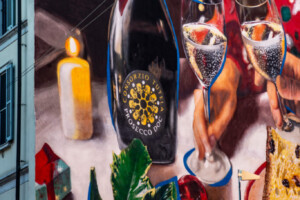International political and economic uncertainty, “unknowns”, which probably will not bring anything new to the 2017 (like Londoners’ invoking Article 50 of the Lisbon Treaty, which would trigger "Brexit") and the insecurity of the most traditionally "safe" markets are enough reasons to be pessimistic about the New Year. There are other reasons, instead, which invoke a positive opinion and Richard Halstead, Chief Operating Officer of "Wine Intelligence" (www.wineintelligence.com) has made up a list.
First of all, said the COO, global data tell us that people are living better, longer and have more resources available to them. For instance, since 1990 more than a billion people no longer live in extreme poverty, and by 2020, according to a Goldman Sachs study, another billion people will enter the so-called global "middle class" (but the qualifying income for this class is only 6.000 Dollars per year). The positive changes in the developing countries of the world are, however, outweighed by the after-effects of the almost ten year long global economic crisis that began in 2008, and the political consequences are identified in previously unthinkable populist phenomena like Brexit, the election of Trump and so on.
Moving the focus of the analysis from global to specific, and especially in the global wine world, continued Halstead, there are abundant reasons to be hopeful in 2017 and in the years to come, “new opportunities will open throughout the world, primarily in China, although opening in an effective way towards that market is creating many headaches. Opportunities are emerging and developing in areas such as sub-Saharan Africa, Southeast Asia and Central and South America, among others”.
Halstead identified three trends that according to him will characterize 2017, globally. The first is that this will be the year in which “the post-80's generation will take over the market. Millennials in the US are already beginning to dominate the on-premise market as well as the off-trade market, and in China their sheer numbers and their love for mobile e-commerce are transforming the production supply chain.
According to our estimates, “continued the "Wine Intelligence" COO, “the number of Chinese that drink imported wines will increase by 40 million over the next four years, doubling the market, and most of them are under 35. Similar phenomena are happening in the most diverse markets, such as the UK, Japan, Poland, Mexico and Germany”.
The second trend to be considered is “the end of the traditional boundaries of retail trade. The division between physical and online stores is not as clear, and is less and less relevant. There is less difference between the two types for the consumer, and regarding wine, there is no longer much difference between a wine shop and a wine bar. Instead there is more and more space for a growing integration of the two, and in 2017 we will see it happen”.
Last but not least, one of the trends that will become apparent in 2017 will be the “coming out” of sweet wines. “When I came into the wine industry, 15 years ago”, recalled Halstead, “the veterans let me know a secret: namely, that sweet wines sell, but only if they are not called by their real names. But finally, in the second decade of the 21st century, sweet wines will come out of their hiding so that both still and sparkling will proudly show this characteristic, and the post-80 generation will buy them willingly”.
Copyright © 2000/2025
Contatti: info@winenews.it
Seguici anche su Twitter: @WineNewsIt
Seguici anche su Facebook: @winenewsit
Questo articolo è tratto dall'archivio di WineNews - Tutti i diritti riservati - Copyright © 2000/2025








































































































































































































